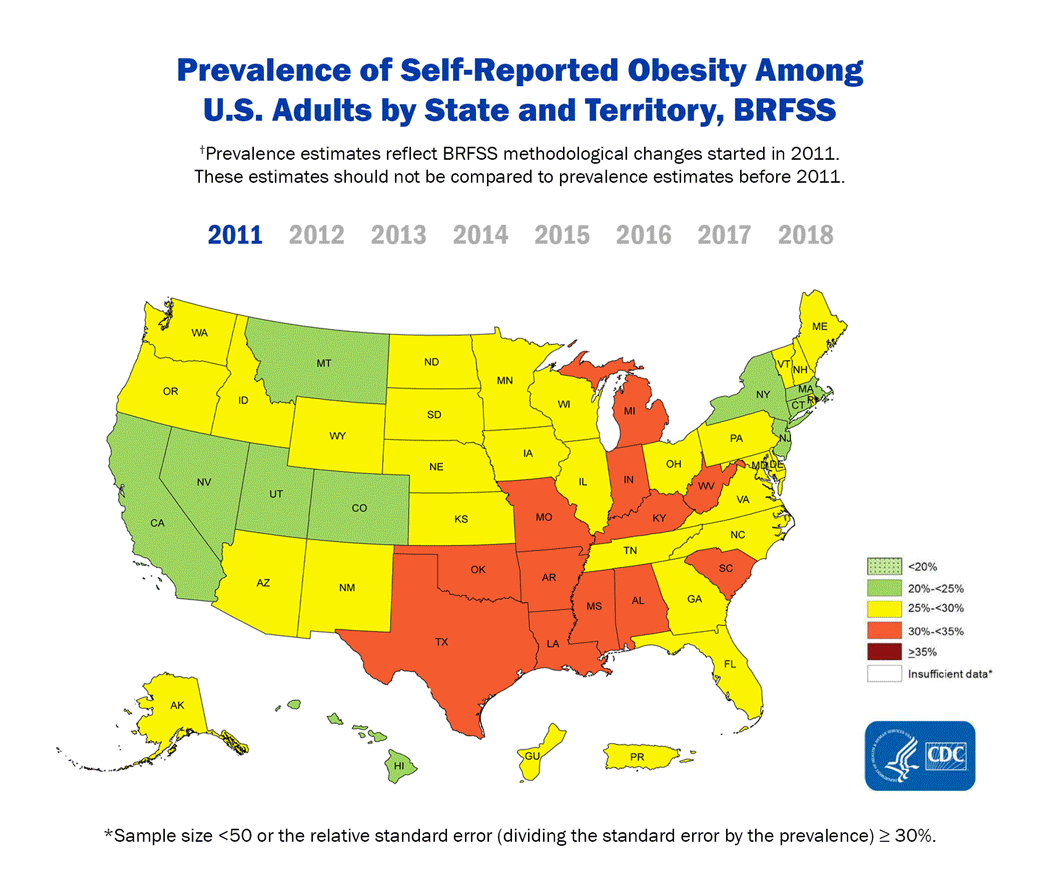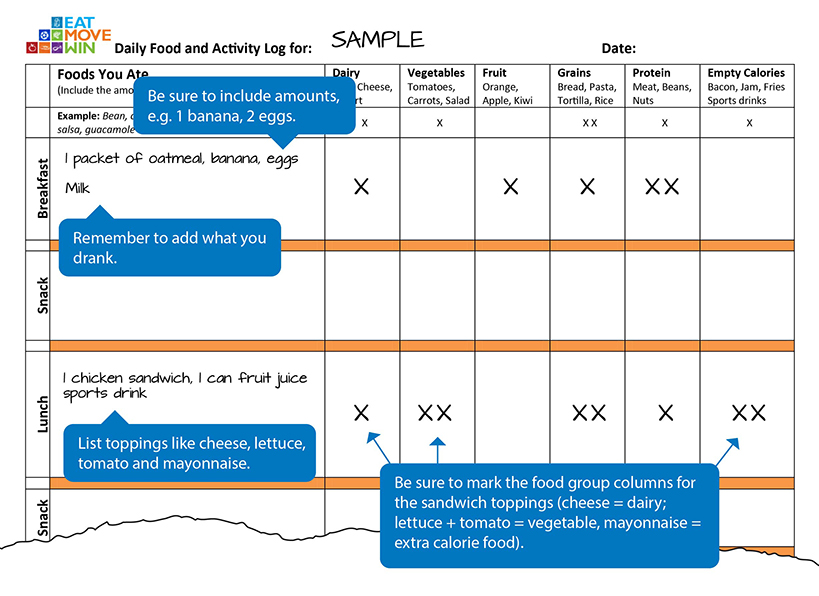Nutrition education designed for high school students. Free Educator Guide to help instructors.

This page as well as Food + You, Optimal Nutrition and Eating Patterns are designed for high school students and adapted from the online nutrition curriculum Eat Move Win. Teachers are encouraged to add these pages to their Google Classroom and download the free Let’s Eat Healthy Educator’s Guide that provides simple instructions for using these online educational resources.
Let’s start by getting your opinion and seeing how it compares to others.

Tracking American Weight Trends

Source: https://www.cdc.gov/obesity/data/prevalence-maps.html
The Centers for Disease Control (CDC) tracks important data, such as the height and weight of Americans, to help improve the overall health of children and adults. Height and weight are used to estimate the numbers of normal, overweight and obese American’s using a Body Mass Index (BMI) formula.

Three key points about BMI are:
A lot of factors contribute to rising obesity rates in the United States. But one reason is that people are eating more and moving less. Currently, Americans eat about 600 more calories per day than American ate in 1970. That’s the same as an extra 3 cans of soda or 2 candy bars each day!
Why should people care about rising obesity rates? The short answer is “for lifelong health.” The link between obesity and increased risk for diabetes and heart disease is well-documented.
One aspect of good nutrition is recognizing the relationship between the quantity of food eaten and the body’s nutritional and energy needs.
The quality of the foods you eat matters too. A high-quality diet gives you energy and the nutrients that will help you grow and develop, while setting the stage for a healthy and active life. Diet quality means looking at the foods you eat as a whole, rather than focusing on individual foods or calorie counting. A high-quality diet has a wide variety of foods, most of which have been minimally processed, such as fruits and vegetables, dairy products, beans, nuts and lean protein such as chicken, turkey, eggs and fish.
Some foods are often categorized incorrectly into food groups. Test your knowledge of common foods that are often misclassified to see how you score.
Watch this episode of Ask a Nutritionist to learn more about improving the quality of your diet.

Do you remember what you ate this morning? Yesterday? To better understand your eating habits, record what you ate yesterday by using the Daily Food and Activity Log.
Write down what you ate yesterday and how much.

Evaluate your food list. Put a mark in each column where you think the food or something in the food fits.
See examples below.

Estimate the number of minutes you were active and decide if it was low, medium or high intensity. Be sure to count fun activities with friends, such as walking around the mall or to a lunch place off campus.

Think About It: Double-check that you've put a mark in every classification that fits with what you ate. Then, evaluate your empty-calorie foods. Can you trade a food from the food groups for an empty calorie food? How does that meet the taste you wanted?

These days, it’s easy for everyone to take in more food in a day than what his or her body needs. HUGE portions are everywhere! Many restaurants serve portions that are greater than our bodies need.
How have portions changed? Find out by studying The New (Ab)Normal infographic.

In the drive-through, at the local taqueria, in the school cafeteria, or at home having a snack, how do you decide when “enough is enough”? Should you split the portion served by sharing with a friend or eat it
all yourself?
Carrying around your own measuring cup or a scale or other tool isn’t very convenient. Check out the Serving-Size Comparison Chart to see how to determine what proper serving sizes look like using your
hands!

Remember that the Serving-Size Chart is only a guide, and you should also keep in mind your specific needs. If you play an after-school sport, for example, you will most likely need more than a standard serving size to help fuel your game and aid in recovery. In addition, many teens are still growing, and you may feel hungrier during a growth spurt. Pay attention to how you feel, and eat when you’re hungry!

Go back to your food and activity log. Did you get the recommended 60 minutes of activity? Did your food intake seem about right for your activity level? The amount of food you eat should be balanced with your level of activity.
Energy balance occurs when you eat the same amount of calories that you burn through activity and daily movement. For example, a 130 pound teen would have to:
Portion sizes have changed over time. Learn more about portion sizes.
Add up the number of servings you ate from each food group during the entire day. Use the MyPlate Plan below to estimate how many calories you need for the day based on your age, gender and activity level.
After you get your results on the MyPlate Plan, click on the calorie amount. That link will take you to MyPlate.gov, where you will see the number of servings recommended for you every day. Instead of counting calories, it is best to look at the quality and quantity of foods you are eating within each food group.
After you determine the number of calories you need for the day based on your age, gender, height, weight and physical activity using the tool shown above, click the link below on your recommended calorie level. This page lists the number of servings recommended for you every day. It is not recommended that you count calories but rather look at the quality and quantity of foods you are eating from each food group.
| Ages 14+ | 1600 | 1800 | 2000 | 2200 | 2400 | 2600 | 2800 | 3000 | 3200 |
What about those empty-calorie "extras" in your food log? While you don’t need to get rid of them entirely, these foods offer few health benefits and often take the place of nutrient-rich foods that are in the food
groups. Think about
trading up some empty-calorie foods for food-group foods.
Review your Daily Food and Activity Log. Complete the below short survey and decide what are 1 or 2 empty-calorie foods that you might trade up.
Continue to Lesson 3 and learn about Optimal Nutrition.